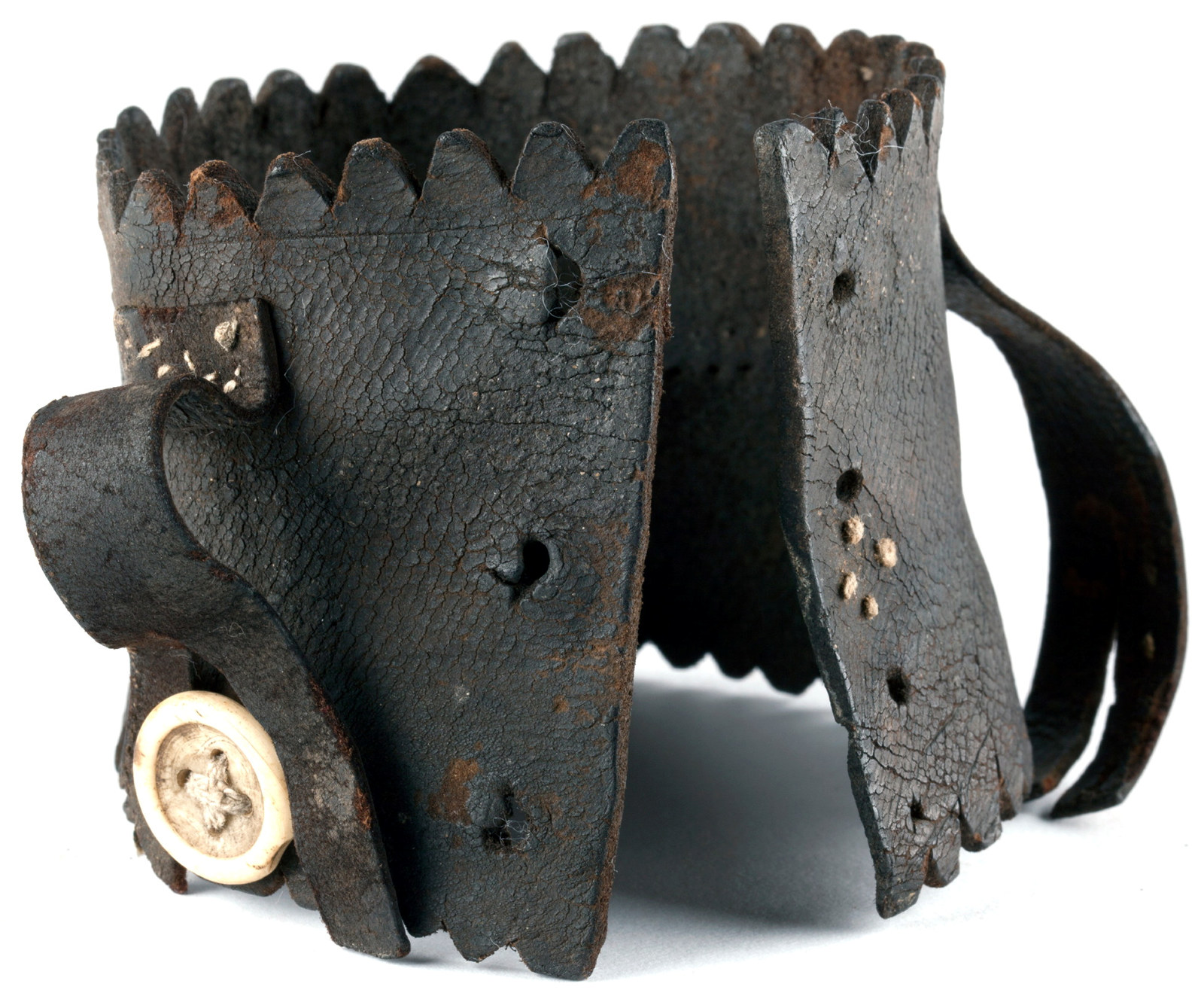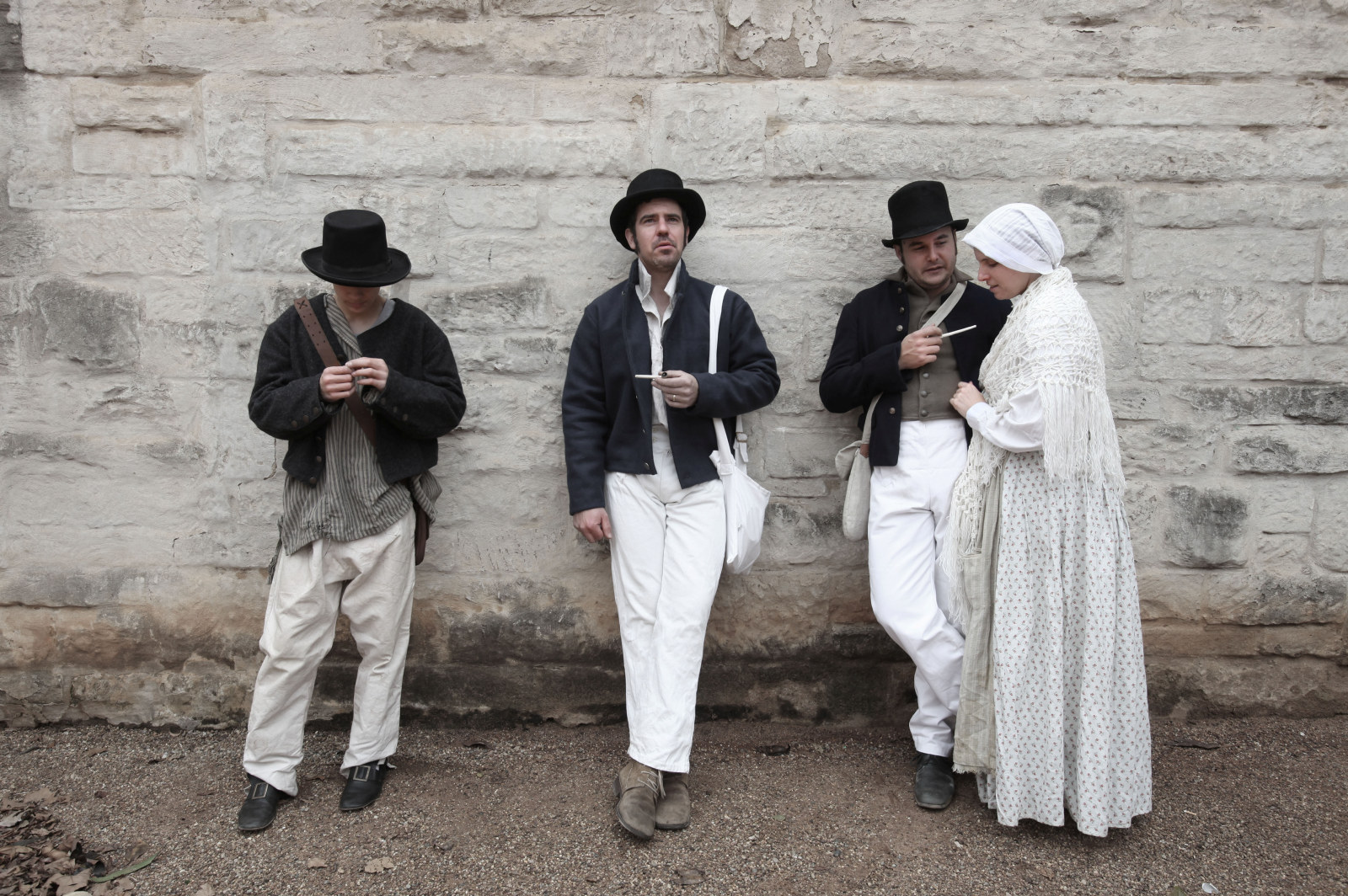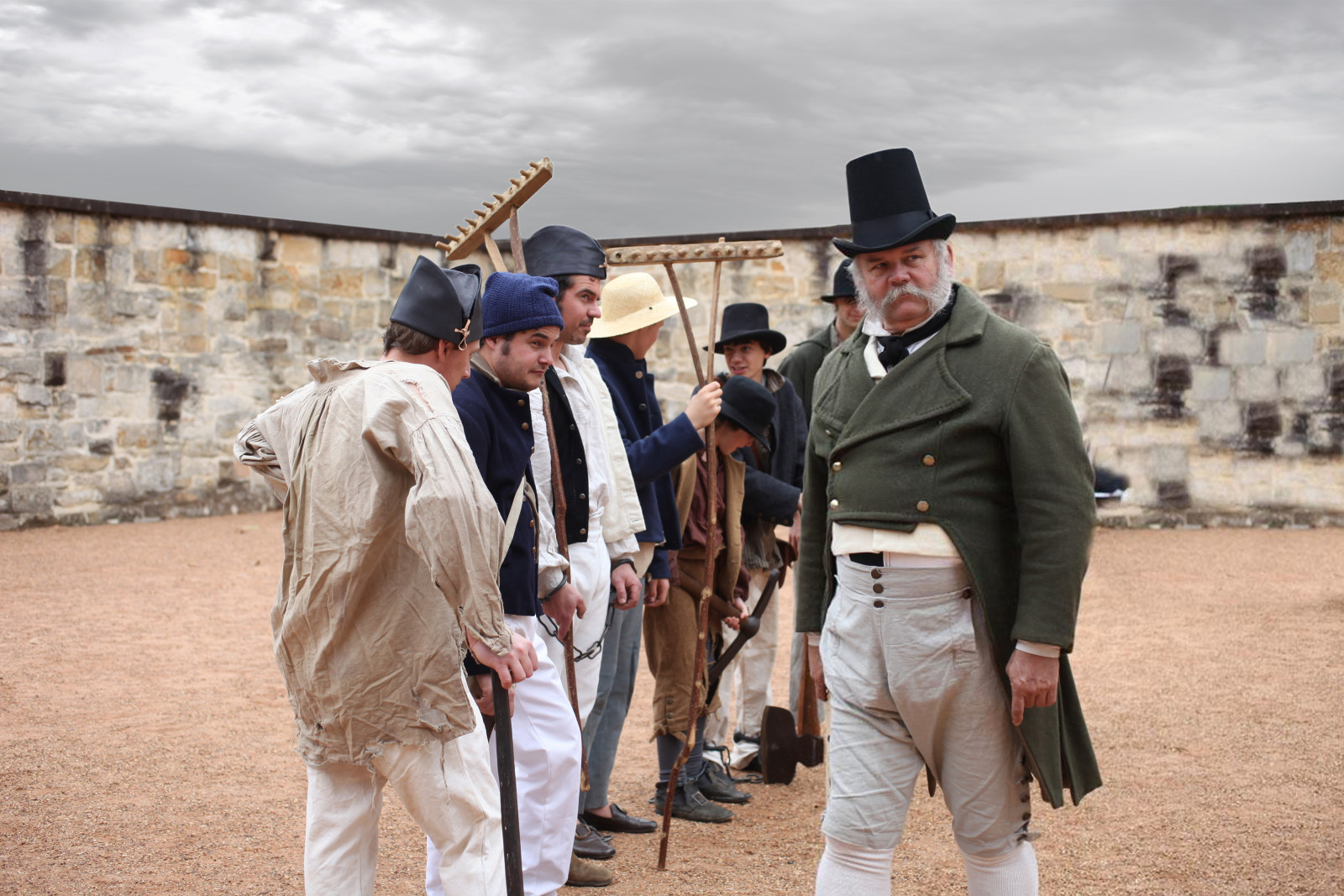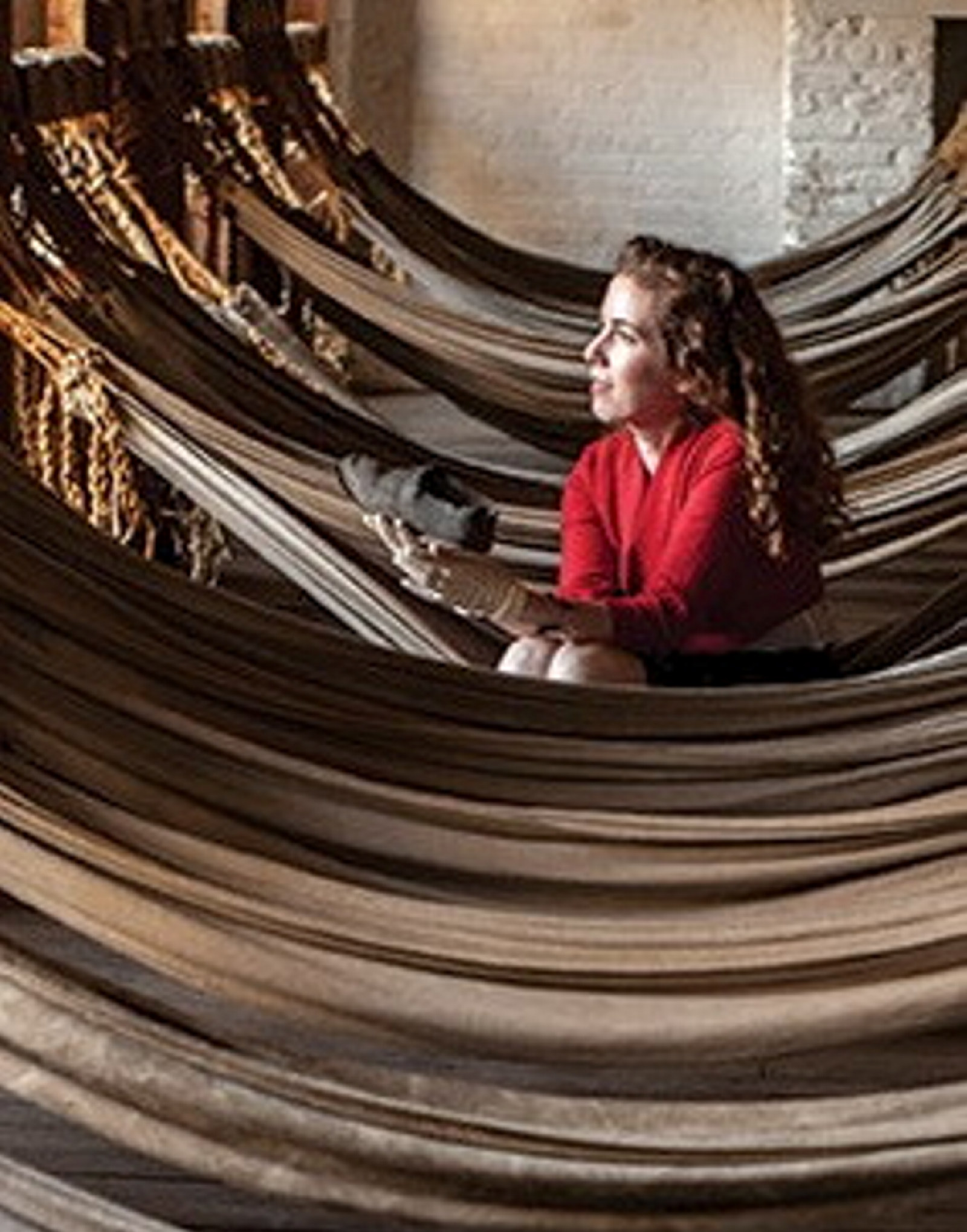Floor'd & spoony: convicts in solitary at the Hyde Park Barracks
Convicts considered solitary confinement a fate worse than flogging, and for those who entered the cell drunk it was a certain cure for the hangover.
Here is what we know.
On the evening of 20 November 1827, nine convicts returned to the Hyde Park Barracks late from work, one in a ‘state of intoxication’. He was locked up in a solitary confinement cell in total darkness for a week on rations of bread and water, and the others were confined for three days.
On the previous Saturday night, an Irishman named Michael Coffee rolled back to the barracks in a drunk and disorderly state. He was confined to a cell for a week and later admitted that he had been a little tipsy, and that ‘they dragged me, and pulled me, and struck me’. The Sydney Gazette proclaimed: ‘Now Michael might be a very intelligent Irishman when sober, but when drunk … he was a born devil’.1
In July that same year, the barracks’ messenger was ‘found rolling about the street at mid-day, highly intoxicated …’ When arrested, he ‘thrust his hand into his pocket, drew out a guinea, and … swallowed it whole … the man was drunk and thereon hangs the tale’.2
Many of the convicts at the Hyde Park Barracks didn’t mind a drink or two. Drinking, smoking and gambling at public houses and sly-grog shops must have provided a relief and refuge, and a means of rebellion against authority. Rum, commonly watered down and mixed with molasses, tobacco and even vitriol (sulphuric acid), was their poison of choice, a drink known as ‘grog’.3
In their own ‘flash’ language, the convicts had several ways to describe those who had been imbibing excessively, including floor’d (so drunk, as to be incapable of standing), spoony (a man who has been drinking till he becomes disgusting by his very ridiculous behaviour); and lushy-cove (a drunken man).4
Newspaper reports and other accounts suggest that Hyde Park Barracks convicts were frequent ‘boosers’ and patrons at Sydney’s drinking establishments, particularly at The Rocks. In April 1837, Deputy Superintendent Slade of the Hyde Park Barracks noted that drunkenness was common among the broader population of Sydney and that he had ‘many cases that came before me as a police magistrate … 80 and 100 cases on a Monday morning ...’5 In the same year it was reported that Sydney consumed 846,206 gallons (3,844,697 litres) of rum.6
In 1837 Reverend Ullathorne noted that, for convicts, ‘the great charm of life is to be as drunk as often as possible’.7 He observed that there were 224 licensed taverns in Sydney, plus numerous sly-grog shops selling illicitly brewed spirits. Alexander Harris described the scene at the Sheer Hulk public house in George Street when he visited one evening in the 1820s or 30s:
Slap went the door and down went the heavy bar; and there we stood in an atmosphere of tobacco smoke within a large, low dilapidated, half-lit room, with benches affixed to the walls all around … in front of these benches were long narrow greasy dark tables covered with glasses and pipes … All these [men] except old Dennis were at this very time prisoners of the Crown, but got out of barracks by “tipping” (bribing) the watchmen and constables …8
Slade also reported that barracks men often climbed over the wall at night and were generally ‘prowling about the town’ or headed for one of the local drinking establishments. He observed that ‘… most of [these establishments] are houses of the worst description, where scenes of the greatest iniquity are nightly carried on’.9 On Sundays barracks convicts were even to be found drinking with the soldiers at the military canteen, the soldiers ‘not knowing them to be convicts, for they go dressed in a different garb’.10
Other common misdemeanours of the barracks convicts were pilfering, being absent without leave, refusing to obey orders, neglect of duty, insolence and attempted escape. When asked which mode of punishment was considered most effective, Deputy Superintendent Lane replied, ‘Solitary confinement is the thing …’11
A stint in the cells could last up to 21 days, and prisoners became disorientated and lost track of time. Convicts considered solitary confinement a fate worse than flogging, and for those who entered the cell drunk it was a certain cure for the hangover. After an inquiry into the death of one drunken convict in the cells, the Coroner held that it was the best course of action, to allow a man in a ‘beastly state of drunkenness’ to quietly sleep off the effect of his intoxication.12
The Hyde Park Barracks had ten solitary confinement cells, located in the corner pavilions of the northern range of the compound, ‘for the confinement of the dissolute or refractory’. Each pavilion contained five small cells, with wooden floorboards and strong timber wainscots. In each cell was a wooden bench just large enough for one, solitary man.13
Notes
- 1. Sydney Gazette (SG), 21 November 1827, p3.
- 2. The Australian, 18 July 1827, p3.
- 3. E Barnard, Exiled: the Port Arthur convict photographs, National Library of Australia, Canberra, 2010, p48.
- 4. J H Vaux, A new and comprehensive vocabulary of the flash language, 1819.
- 5. ‘Minutes of Evidence Taken Before the Select Committee on Transportation, 25 April 1837’, British Parliamentary Papers, Crime and Punishment Transportation, vol 2, pp59–60.
- 6. L-C de S de Freycinet, Voyage autour du monde, Chez Pillet Aîne, Paris, 1824–44.
- 7. W B Ullathorne, The Catholic Mission in Australasia, Rockliff & Duckworth, Liverpool, 1837.
- 8. A Harris, Settlers and convicts, Melbourne University Press, Melbourne, 1954, pp48–9.
- 9. ‘Minutes of Evidence …’, op cit, pp60, 66.
- 10. ‘Minutes of Evidence Taken Before the Select Committee on Security of Life and Property’, Governor’s Despatches, 15 June 1844, Mitchell Library, State Library of NSW, A1235, p31.
- 11. ibid, p49.
- 12. SG, 23 January 1836, p3.
- 13. SG, 17 July 1819, p2; Governor’s Despatches, 22 January 1833, Mitchell Library, State Library of NSW, A1267/12, p780.
Published on
Related
Browse all
Convict Sydney
Leg Iron Guard
A stunning example of an improvised handicraft, this leather ankle guard or ‘gaiter’ was made to protect a convict’s ankle from leg irons

Convict Sydney
1801 - Day in the life of a convict
In the young colony, there was no prisoner’s barrack - the bush and sea were the walls of the convicts’ prison

Convict Sydney
1820 - Day in the life of a convict
By 1820 the days of relative freedom for convicts in Sydney were over

Convict Sydney
1826
The hot Sydney summer of 1826 ended with almost 1,000 convicts living at the overcrowded Barracks
